17.11.2020
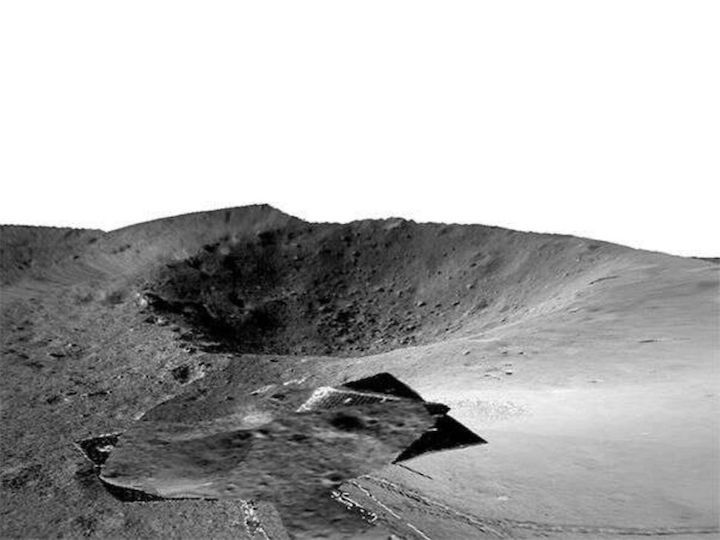
China's Chang'e 4 moon rover has been snapping new images highlighting the spacecraft's travels and discoveries on the lunar far side.
The Chang'e 4 mission, which consists of a lander and a rover, began its 24th lunar day in Von Kármán Crater on Nov. 9, having made the first-ever touchdown on the far side of the moon on Jan. 3, 2019. (One lunar day is about two weeks' time on Earth.)
Meanwhile, a Chinese language drive diary, published while the two spacecraft hibernated during the very cold, roughly 14-Earth-day-long lunar night, details the Yutu 2 rover's latest activities, completed during the mission's 23rd day.
Accompanying the drive diary are a host of stunning new photographs, including a panoramic image that shows a large crater amid a desolate landscape and the distant rim of Von Kármán Crater.

Yutu 2 was not able to approach a rock specimen identified during the previous lunar day as an interesting target. It instead analyzed a rock specimen near the large crater using its spectrometer. The rover has used that instrument to analyze a range of specimens in Von Kármán Crater, notably causing a stir when it discovered an impact-melt breccia initially described in Chinese as "gel-like."
Other images detail the routes carefully planned by the Yutu 2 drive team as they navigate between numerous craters that could ensnare the rover as it makes its way to the northwest of the Chang'e 4 lander. The team have started using software to produce 3D mapping to help plot the rover's journey.
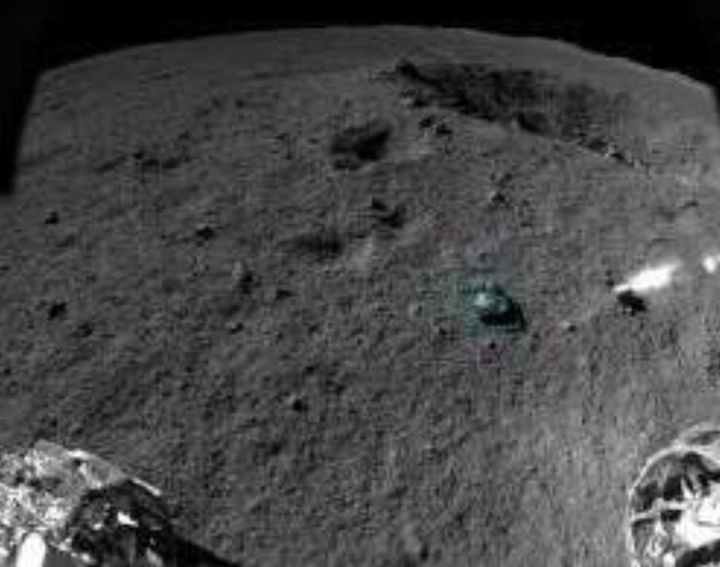
The China National Space Administration also released a superb high-resolution panorama taken by Yutu 2 while still close to the lander.
The Chang'e 4 lander and Yutu 2 rover had design lifetimes of one year and three months respectively. However, the pair are still going strong with all science payloads functioning well, according to the administration. So far the spacecraft have survived 23 lunar days and nights on the far side of the moon, or more than 670 Earth days.
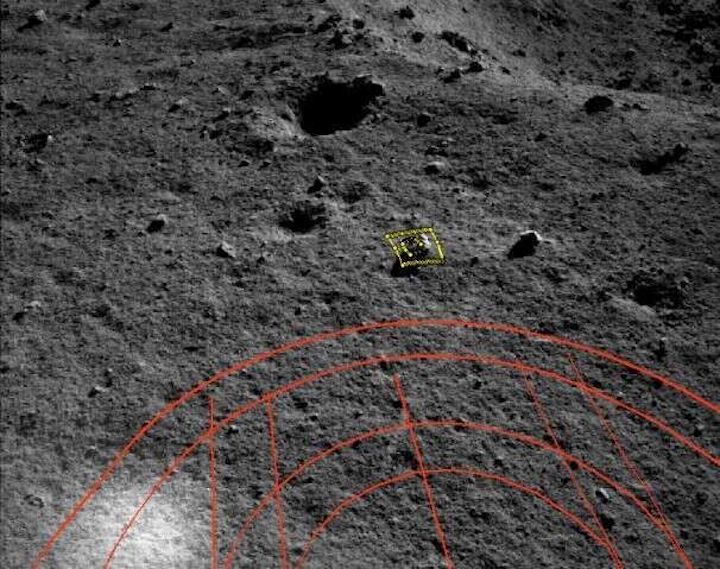



China is planning to launch its next lunar mission, Chang'e 5, later this month. The mission aims to land on the near side of the moon, collect around 4.4 lbs. (2 kilograms) of rocks and regolith samples and deliver them to Earth.
Quelle: SC
----
Update: 2.12.2020
.
Rückblick:
Footage: Chang’e-4 making soft landing on the Moon’s far side
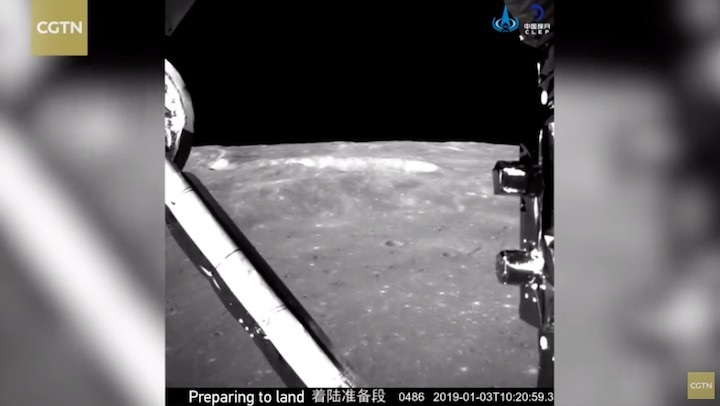
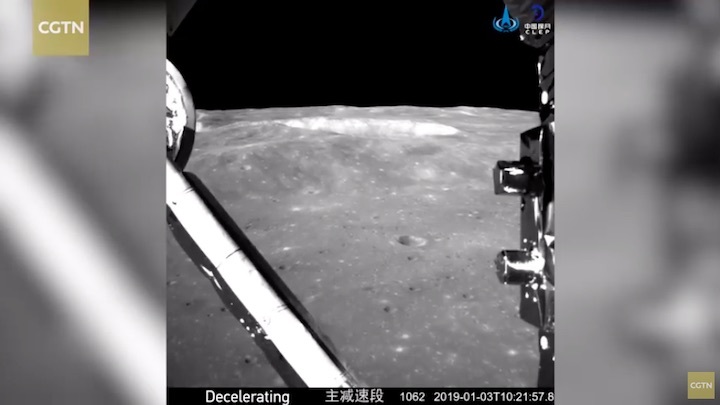
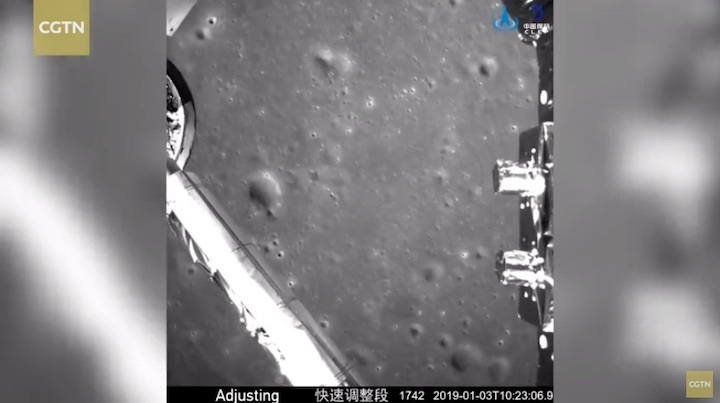
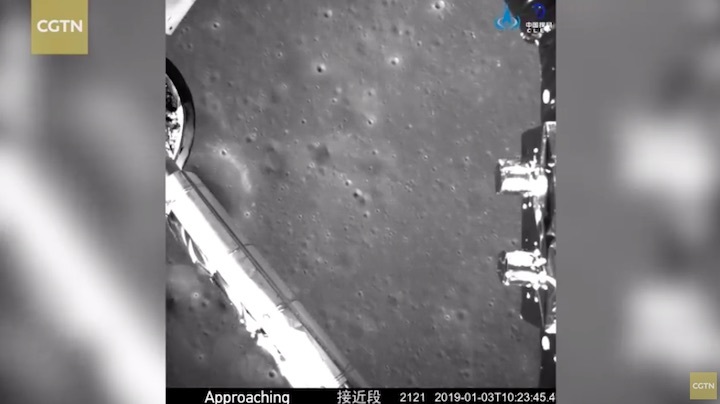
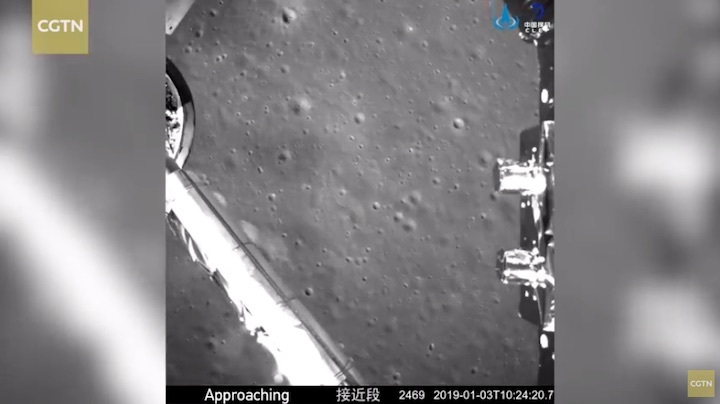

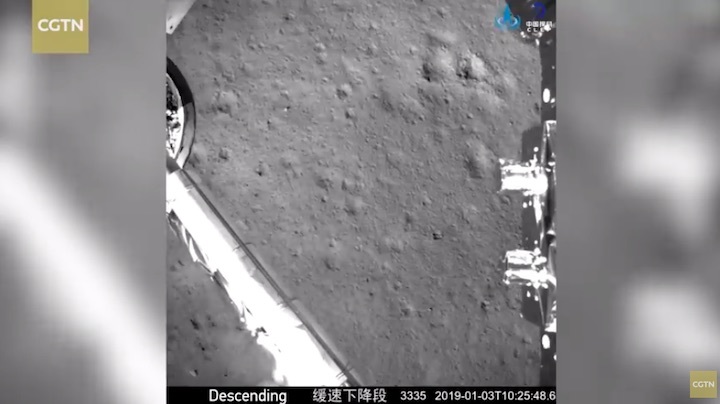
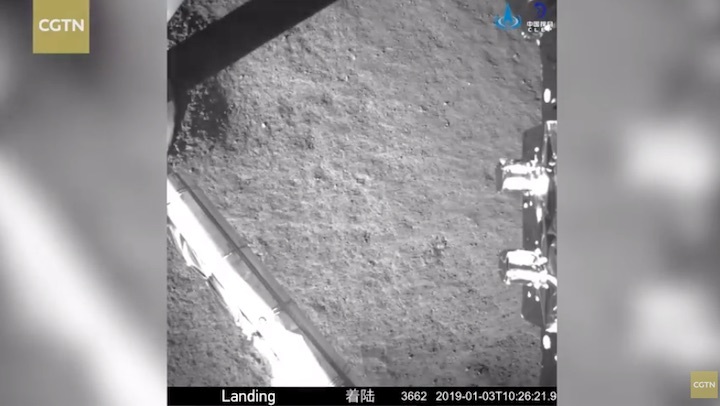
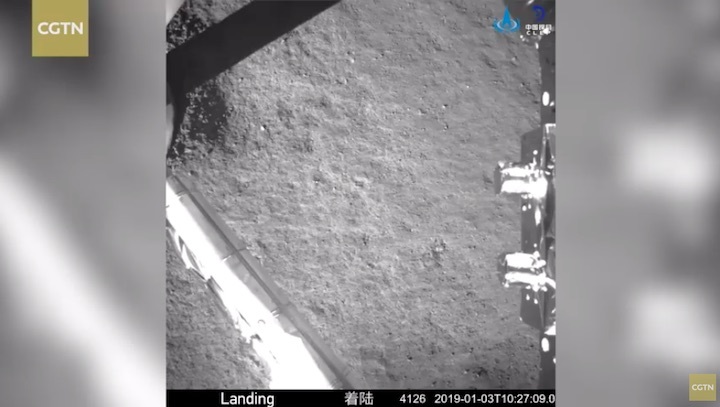
China National Space Administration released a video of Chang’e-4 making its soft landing on the Moon’s far side. Take a look.:
https://www.youtube.com/watch?v=jyjyf4ANGIo
Quelle: YouTube
----
Update: 24.12.2020
.
China's lunar rover travels about 600 meters on moon's far side
China's lunar rover Yutu-2, or Jade Rabbit-2, has survived 719 Earth days and traveled 600.55 meters on the far side of the moon as of Tuesday.
Both the lander and the rover of the Chang'e-4 probe have ended their work for the 25th lunar day, and switched to the dormant mode for the lunar night due to the lack of solar power, according to the Lunar Exploration and Space Program Center of the China National Space Administration. Enditem
Quelle: Xinhua
----
Update: 9.01.2021
.
China's Chang'e-4 probe resumes work for 26th lunar day
The lander and rover of the Chang'e-4 probe have resumed work for the 26th lunar day on the far side of the moon.
The lander woke up at 3:13 a.m. on Friday (Beijing time), and the rover Yutu-2, or Jade Rabbit-2, woke up at 10:29 a.m. on Thursday, according to the Lunar Exploration and Space Program Center of the China National Space Administration.
Landing on the moon on Jan. 3, 2019, the Chang'e-4 probe has survived 736 Earth days on the moon.
A lunar day is equal to about 14 days on Earth, and a lunar night is of the same length. The solar-powered probe switches to dormant mode during the lunar night.
During the 26th lunar day, Yutu-2 will move northwest toward the basalt area or the impact craters with high reflectivity.
Yutu-2 will take panoramic photos, and its infrared imaging spectrometer, neutral atom detector and lunar radar will continue to carry out scientific explorations. Research teams will analyze the detection data and release the scientific results. Enditem
Quelle: Xinhua
----
Update: 8.02.2021
.
China's Chang'e-4 probe resumes work for 27th lunar day
The lander and rover of the Chang'e-4 probe have resumed work for their 27th lunar day on the far side of the moon.
The lander activated at 4:48 p.m. on Saturday (Beijing time), and the rover Yutu-2, or Jade Rabbit-2, activated at 4:26 a.m. also on Saturday, according to the Lunar Exploration and Space Program Center of the China National Space Administration.
Yutu-2 has traveled about 628.5 meters on the far side of the moon. It is currently located about 430 meters northwest of the landing site.
A lunar day is equal to about 14 days on Earth, and a lunar night is of the same length. The solar-powered probe switches to dormant mode during the lunar night.
During the 27th lunar day, the panorama camera on the rover will take colored pictures of moon rocks and impact craters.
The rover will move southwest toward a rock with a diameter of about 18 cm, which is about 17.8 meters away.
The infrared imaging spectrometer will be used to detect the rock and surrounding lunar soil. The neutral atom detector and lunar radar will continue to carry out scientific explorations. Enditem
Quelle: Xinhua
----
Update: 14.02.2021
.
China's Yutu 2 rover finds 'milestone' on far side of the moon
This weird elongated rock shard could have reached the moon by meteor impact.
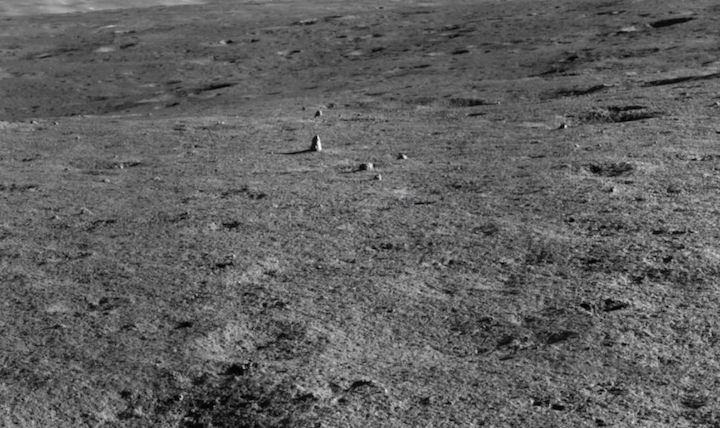
China's Chang'e 4 spacecraft are back in action for a 27th lunar day on the far side of the moon, but it's the discoveries from the mission's previous lunar day that have scientists excited.
The Chang'e 4 lander and Yutu 2 rover resumed activities on Feb. 6 after hibernating during the severe cold of lunar night, according to the Chinese state-run media outlet Xinhua. But one lunar day earlier the rover came across a curious rock specimen which the Yutu 2 drive team began to refer to as a "milestone."
According to a Yutu 2 diary published by Our Space, the Chinese language science outreach channel affiliated with the China National Space Administration (CNSA), mission scientists agreed with the drive team that the elongated rock was worth closer inspection.
The team then planned to do a close approach and analyze the rock with Yutu 2's Visible and Near-infrared Imaging Spectrometer (VNIS) instrument, which detects light that is scattered or reflected off materials to reveal their makeup.
VNIS has been used to investigate a number of rocks and regolith samples along Yutu 2's path across Von Kármán crater. These include unusual melt glassspecimens and potentially material from the lunar mantle.
While not looking particularly exciting to the untrained eye, the find has generated interest among lunar scientists. "It seems to have a shard-like shape and is sticking out of the ground. That's definitely unusual," Dan Moriarty, NASA Postdoctoral Program Fellow at the Goddard Space Flight Center in Greenbelt, Maryland, told Space.com.
"Repeated impacts, stresses from thermal cycling, and other forms of weathering on the lunar surface would all tend to break down rocks into more-or-less 'spherical' shapes, given enough time," Moriarty said. "Think of how rocky beaches wear down stones to smooth, round shapes over time by repeated jostling in the waves."
Moriarty said both the shard-like shape and that pronounced "ridge" running near the edge of the rock seem to indicate that this rock is geologically young, and was emplaced relatively recently.
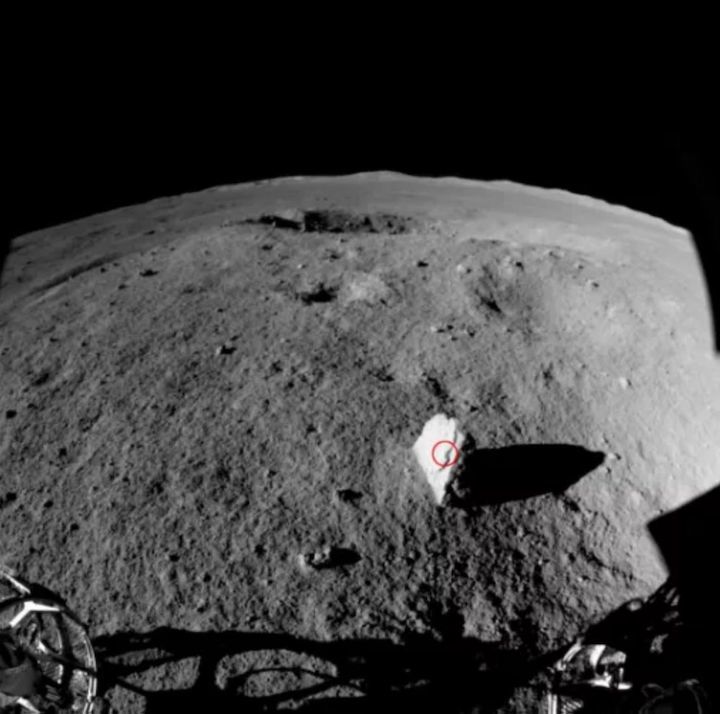
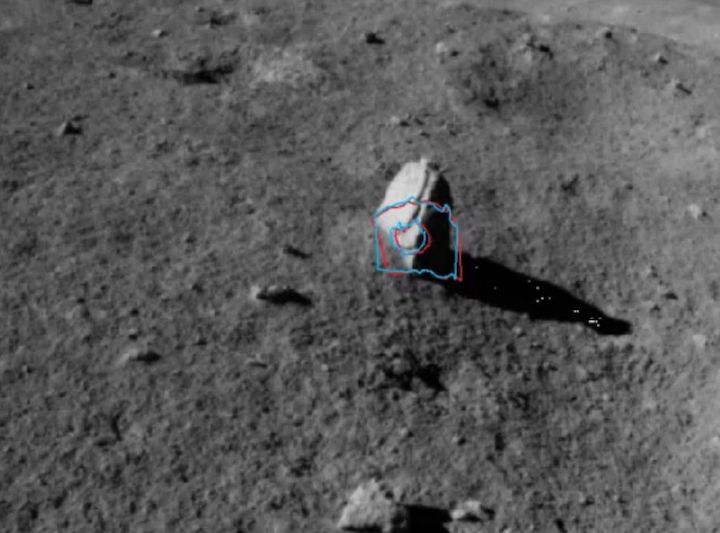
A closeup of the elongated "milestone" rock spotted on the far side of the moon by China's Yutu 2 rover. (Image credit: CNSA)
"I would definitely guess an origin as impact ejecta from some nearby crater. It is possible that a rock with this aspect ratio could have been produced by a process known as spallation, where intact fragments of rock are blown off the nearby surface without experiencing the same degree of shock pressures that the immediate target undergoes," Moriarty said, adding that this initial assessment is just a guess.
Followup detections and data from VNIS will provide much greater insight. Clive Neal, a leading lunar expert at the University of Notre Dame, agrees that, based on the images, the specimens are impact ejecta rather than exposed bedrocks. "The question I have is are they locally derived? Hopefully the spectral data will allow an evaluation of the origin as local or exotic, that is, from outside this area," he said.
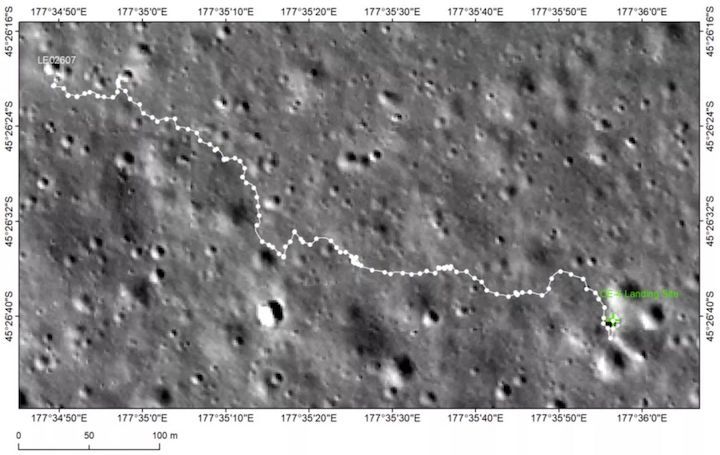
Yutu 2 and the Chang'e 4 lander have already greatly exceeded their design lifetimes of 90 Earth days and one year, respectively. The rover has covered a total of 2,060 feet (628 meters) since its deployment from the lander on Jan. 3, 2019.
In November last year China launched its Chang'e 5 lunar sample return mission. The mission resulted in 3.81 lbs. (1.73 kilograms) of fresh moon samples being delivered to Earth just over three weeks later. CNSA last month published procedures for requesting samples for scientific analysis.
Quelle: Space.com
----
Update: 21.02.2021
.
China's lunar rover travels 652.62 meters on moon's far side
The lander and the rover of the Chang'e-4 probe have been switched to dormant mode for the lunar night after working stably for the 27th lunar day, according to the Lunar Exploration and Space Program Center of the China National Space Administration.
The lander was switched to dormant mode at 1:30 p.m. Friday (Beijing Time) as scheduled, and the rover, Yutu-2 (Jade Rabbit-2), at 1:48 a.m. Friday, said the center.
The Chang'e-4 probe, which was switched to dormant mode during the lunar night due to the lack of solar power, had been on the far side of the moon for 778 Earth days as of Saturday, and the rover has traveled 652.62 meters. A lunar day and night each equal 14 days on Earth.
The rover is in good condition, and all scientific payloads are working normally, said the center.
The Chang'e-4 probe, launched on Dec. 8, 2018, made the first-ever soft landing on the Von Karman Crater in the South Pole-Aitken Basin on the far side of the moon on Jan. 3, 2019.
The rover Yutu-2 has far exceeded its three-month design lifespan, becoming the longest-working lunar rover on the moon. Enditem
Quelle: Xinhua
----
Update: 9.03.2021
-
China's Chang'e-4 probe resumes work for 28th lunar day
The lander and rover of China's Chang'e-4 probe have begun their 28th lunar day of work on the far side of the moon.
Landing on the moon on Jan. 3, 2019, the Chang'e-4 probe has survived 795 Earth days on the moon, the Lunar Exploration and Space Program Center of the China National Space Administration said Monday.
A lunar day is equal to about 14 days on Earth, and a lunar night is of the same length. The solar-powered probe switches to dormant mode during the lunar night.
The rover Yutu-2, or Jade Rabbit-2, is currently located about 429 meters northwest of the landing site. Enditem
Quelle: Xinhua
